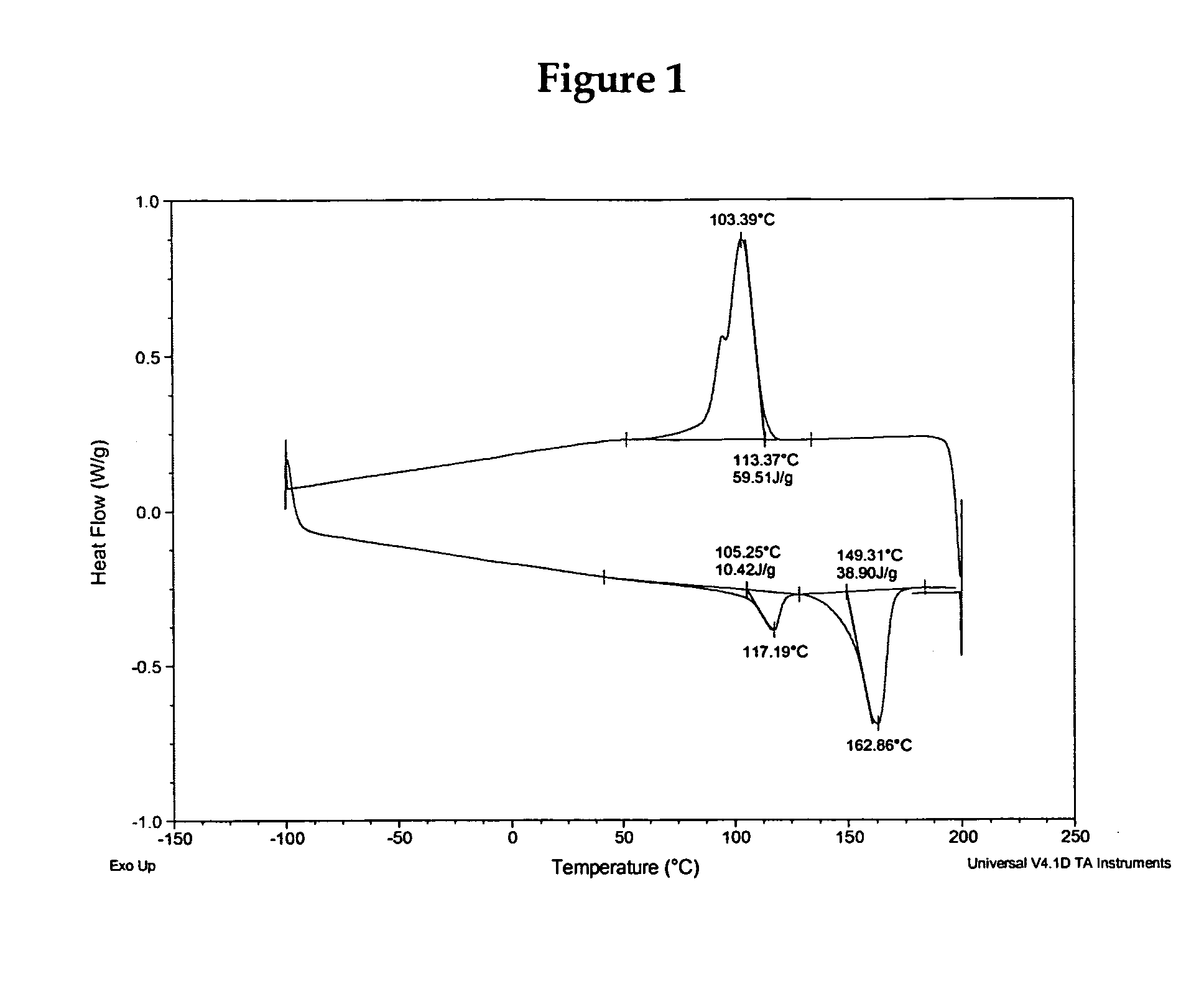Process of making polymer blends
a technology of polypropylene and polymer blend, which is applied in the field of making polymer blend, can solve the problems of rubbery clumps, relatively high method cost, and process inability to produce polypropylene with high molecular weight and high melting poin
- Summary
- Abstract
- Description
- Claims
- Application Information
AI Technical Summary
Benefits of technology
Problems solved by technology
Method used
Image
Examples
examples 1-1 to 1-5
[0153]Five polymer blends were produced in a two-stage polymerization reaction by polymerizing propylene in a slurry process in the first stage to make homopolymer, and copolymerizing propylene and ethylene in a solution process in a second stage in the presence of the homopolymer produced in the first stage. These examples were used to simulate a continuous two-stage polymerization with two reactors in series configuration. The polymerization was carried out in an autoclave reactor equipped with a stirrer, an external water / steam jacket for temperature control, a regulated supply of dry nitrogen, ethylene, propylene, and a septum inlet for introduction of other solvents, catalysts and scavenger solutions. The reactor was first washed using hot toluene and then dried and degassed thoroughly prior to use. All the solvents and monomers were purified by passing through a 1-liter basic alumina column activated at 600° C., followed by a column of molecular sieves activated at 600° C. or ...
example 2-1 to 2-3
[0170]Examples 2-1 through 2-3 demonstrate a two-stage polymerization reaction with the use of a supported Ziegler-Natta catalyst to produce polypropylene in a slurry process and a homogeneous metallocene catalyst to produce ethylene / propylene rubber in a solution process. The polymerization was carried out by the following the same procedure as described in Example 1-1 to 1-5 except that a Ziegler-Natta catalyst was employed. The catalyst was comprised of TiCl4 supported on MgCl2. The polymerization procedure was as follows: 2 ml of triethyl aluminum solution (TEAL) (1 mol % in hexane), 20.9 mmole of H2 and 300 ml of propylene were first added into a 2-liter autoclave reactor. The mixture was then immediately stirred and heated rapidly to a desired polymerization temperature. Then a specific amount of Zieglar-Natta catalyst along with 2 ml of cyclohexylmethyl dimethoxysilane solution (CMMS) (0.1 mol % in hexane) was flushed into the reactor with additional propylene. The first stag...
PUM
| Property | Measurement | Unit |
|---|---|---|
| wt % | aaaaa | aaaaa |
| wt % | aaaaa | aaaaa |
| densities | aaaaa | aaaaa |
Abstract
Description
Claims
Application Information
 Login to View More
Login to View More - R&D
- Intellectual Property
- Life Sciences
- Materials
- Tech Scout
- Unparalleled Data Quality
- Higher Quality Content
- 60% Fewer Hallucinations
Browse by: Latest US Patents, China's latest patents, Technical Efficacy Thesaurus, Application Domain, Technology Topic, Popular Technical Reports.
© 2025 PatSnap. All rights reserved.Legal|Privacy policy|Modern Slavery Act Transparency Statement|Sitemap|About US| Contact US: help@patsnap.com


